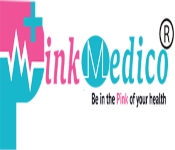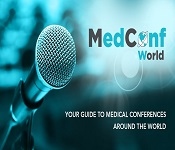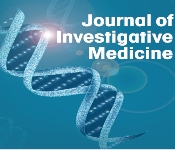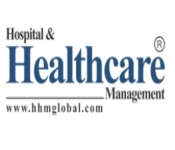Theme: Advancing gastroenterology, improving patient care
Pancreas 2022
Global Summit on Pancreas, Gastroenterology and Digestive Diseases is delighted to extend an invitation to all of you to attend the conference (Hybrid event) which will be held in Webinar on January09-10, 2023. Seminars, symposiums, and workshops on the latest therapeutic developments for various pancreatic illnesses, as well as talks by famous surgeons, gastroenterologists, endocrinologists, and many passionate young researchers, will be part of the conference activities.
The pancreas is the most essential of the digestive organs, as it produces insulin and other digestive enzymes as well as assisting in the maintenance of the body's metabolism. Jaundice, pancreatitis, diabetes, and other disorders can all be caused by a malfunctioning pancreas. Some of these disorders can progress to the point where they cause pancreatic cancer. Other disorders that affect the pancreas include genetic cystic fibrosis, which causes the pancreatic fluids to get clogged by thick mucus, causing severe pancreas damage.
The agenda will include a variety of presentations selected from submitted abstracts to illustrate the progress and diversity of pancreatic cancer research. Special workshops presenting cutting-edge research, career development possibilities, and debating field controversies will be exciting for both new and established investigators. Make your plans today to attend this exciting conference.
Conference Opportunities
For Researchers and Faculty Members
- Speaker Presentation
- Poster Display
- Symposium hosting (4-5 member team)
- Workshops
1. GASTROENTEROLOGY and HEPATOLOGY
Gastroenterology is a medical speciality that deals with digestive diseases and their treatment. Gastroenterologists undertake diagnostic and therapeutic procedures such as colonoscopy, esophagogastroduodenoscopy, endoscopic retrograde cholangiopancreatography, endoscopic ultrasonography, and liver biopsy. Gastroenterology is a specialty of medicine that studies and treats gastrointestinal diseases using endoscopy. Gastroenterology is frequently linked to liver problems. Pancreatic disease can show up in a number of ways, including symptoms. When symptoms of acute pancreatitis occur, a person may feel acute-onset, intense mid-abdominal pain, nausea, and vomiting. In severe episodes of pancreatitis, rapid blood loss and a systemic inflammatory response syndrome can occur. When the pancreas is unable to secrete digesting enzymes, as when a pancreatic tumour plugs the pancreatic duct, jaundice develops.
Hepatitis is transmitted by tainted food or drink, as well as blood and bodily fluids (B,C). Viruses spread by water and food are usually self-limiting, resulting in a short-term illness that goes away on its own. Blood-borne viruses (B, C) can cause acute and chronic liver disease, and they can be transferred from mother to kid through close contact with bodily fluids, risky injections, and unscreened blood transfusions. In the most common kinds, hepatitis can be prevented or cured. Hepatitis A and B vaccination is a potential alternative. Treatments for hepatitis C are available, but they are costly.
2. GASTROINTESTINAL SURGERY
Gastrointestinal surgery is a type of surgery used to treat infections in the digestive tract. The oesophagus, stomach, small intestine, large intestine, and rectum are all part of this system. The liver, gallbladder, and pancreas are also excluded. or an A malignant or noncancerous tumour injured section of the body, such as the intestine, may be removed through surgery.
Appendicitis is a kind of appendicitis that affects the (appendectomy)
Colon cancer and other gastrointestinal cancers: Cancerous tumours in the digestive system and cancerous sections of the digestive system are surgically removed. A surgeon, for example, may remove a tumour as well as parts of the pancreas and liver.
1. Diverticular disease. (diverticulitis)
2. Gallbladder disease: cholecystectomy
3. Gastroesophageal reflux disease (GERD) and hiatal hernias: fundoplication
4. Inflammatory bowel disease
5. Rectal prolapse.
3. Gastrointestinal cancers and liver diseases
Cirrhosis caused by hepatitis B, hepatitis C, or alcohol is a common cause of liver cancer. Aflatoxin, non-alcoholic fatty liver disease, and liver flukes are among the other causes. Hepatocellular carcinoma (HCC), which accounts for 80% of cases, and intrahepatic cholangiocarcinoma are the most prevalent kinds. Blood tests and medical imaging may be used to support the diagnosis, and tissue biopsy may be used to confirm it. Surgery, targeted therapy, and radiation therapy are all possible treatment options. Ablation therapy, embolization therapy, or liver replacement may be used in certain circumstances.
The good news is that making healthy lifestyle changes can help reduce your risk of gastrointestinal cancer. a low-fat diet high in fruits and vegetables, less red meat, and moderate alcohol shows a clear decline in risk," says the study.
Gastric cancer (stomach cancer) is a type of cancer that affects the stomach.
Colorectal cancer is a type of cancer that affects the colon cancer of the liver.
4. Gastrointestinal Immunology
Gastrointestinal immunology is the study of immune responses that occur at mucosal membranes of the intestines, urogenital tract, and respiratory system, i.e. planes that interact with the outside world. The mucosal immune system provides protection against infections in healthy states, but it is patient when it comes to non-harmful commensal microorganisms and benign environmental chemicals.
Immunodeficiency occurs when the immune system is less active than it should be, resulting in recurrent and potentially fatal infections. Immunodeficiency in humans can be caused by a genetic condition like unmarked joined immunodeficiency, assimilated events like HIV/AIDS, or the use of immunosuppressive medicine. Autoimmunity is caused by an overactive immune system that attacks healthy tissues as if they were foreign organisms. Hashimoto's thyroiditis, rheumatoid arthritis, diabetes mellitus type 1, and systemic lupus erythematosus are examples of corporate autoimmune disorders. Immunology is the scientific study of all aspects of the immune system.
5. Pancreatic and Biliary Diseases
The pancreas is a powerful organ located just behind the stomach. It encases two cells that play critical roles in how you process food and govern your digestive system. One type of cell produces molecules that break down proteins, lipids, and carbohydrates, allowing you to acquire nourishment from your food. The other produces hormones, or affront, which regulate how your body stores and uses sugar. Your liver, pancreas, gallbladder, and/or bile channels are generally controlled by pancreatic and biliary conditions. These situations are typically linked to long-term damage to the organ or its surrounding tissue. Typically, these matters are decided at the local level. These organs can affect undecorated signals when they are inconvenient, but they can also silently effect disagreements.
• Swelling in the abdomen
• Dark urine
• Diarrhea, especially with fat beads in the stools.
• Flatulence, hiccups, and belching.
6. Gastrointestinal Diseases during Pregnancy and Lactation
Pregnancy is characterised by a variety of functional abnormalities that can lead to a variety of symptoms, the most common of which are gastrointestinal complaints such as heartburn, nausea and vomiting, or constipation. Chronic gastrointestinal illnesses necessitate treatment preservation for the duration of the pregnancy, raising the intriguing question of whether benefits to the mother may be harmful to the unborn. Furthermore, certain infections, such as acute fatty liver of pregnancy, improve exclusively during pregnancy and may necessitate emergency procedures, such as foetus delivery. Even if they aren't encountered every day, awareness of pregnancy-related disorders is essential, and collaboration between gastroenterologists and obstetricians is frequently required. In this paper, we examine pregnancy-related illnesses and recommend the best treatment options based on the most recent research and standards.
7. Endoscopy
An endoscopy is a treatment in which your doctor uses specialised devices to inspect and operate on your body's internal organs and veins. It allows doctors to see problems inside your body without having to scratch your skin. A surgeon inserts an endoscope through a small cut or a foundational in the body, such as the mouth. An endoscope is a flexible tube with a camera integrated in that allows your doctor to look inside your body. Your doctor can use forceps and scissors on the endoscope to operate or remove tissue for biopsy. Assist your doctor in figuring out what's causing any unexpected symptoms you're having.
• Take a small sample of tissue that can be sent to a lab for further analysis.
8. Neurogastroenterology and Motility
Neurogastroenterology is the study of the relationship between the nervous and digestive systems. One essential GI function regulated by the neurological system is motility, or the coordination of muscles that move food through the digestive tract from swallowing to faeces. The term "motility disorders" refers to a wide spectrum of gastrointestinal problems. The UT Southwestern Medical Center's professional interdisciplinary team of neurogastroenterologists, gynaecologists, surgeons, and physical therapists expertly assesses and treats people with GI motility disorders.
The nature of the problem determines the treatment for neurogastroenterological and motility disorders. Pharmaceuticals, including clinical trials, are among the treatments provided at UT South western. Endoscopic operations include enteroscopy, esophageal dilatation, pneumatic dilation, Botox injection, and feeding tubes.
• Pelvic floor physical therapy, as well as counselling and biofeedback.
• Nutritional and dietary guidance.
InterStim and Solesta are two surgical treatments.
9. Gastroenterology & Nutrition
Paediatric gastroenterology has witnessed tremendous expansion in North America and Europe. It all began in the nineteenth century with paediatrics, which grew up alongside children's hospitals. Around the same time, the concept of specialists specialising in specific organs began to take shape. The speciality was founded by Dr. Samuel Gee of London, who concentrated on severe clinical diseases in children such as celiac disease and cyclic vomiting syndrome.
Obesity and underweight are the most common dietary issues in children, and both are caused by an imbalance in the quantity of calories consumed vs calories burned. Both in children should be treated at the same time by a paediatric gastroenterologist and a paediatric nutritionist to help the child recover his or her normal weight without side effects (hypertension, gastritis, etc.). The nutritionist will be in charge of the child's eating habits, while the paediatric gastroenterologist will be in control of the digestive system.
10. Pancreas/ Pancreatology
The pancreas is an organ placed beneath the stomach in the belly. The pancreas is made up of two basic organs: the exocrine and endocrine pancreas. The digestive enzymes produced by the exocrine pancreas are responsible for the breakdown of fat, protein, and carbs in our diet. Insulin and glucagon are hormones generated by the endocrine pancreas that help regulate blood sugar levels.
Pancreatic problems include acute pancreatitis, chronic pancreatitis, pancreatic cancer, pancreatic neuroendocrine tumours, cystic pancreas tumours, and autoimmune pancreatitis. Acute and chronic pancreatitis are quite common in India, and pancreatic cancer looks to be on the rise as well.
11. Pancreatic Disorders & Treatment
If there are problems with pancreatic hormone synthesis or regulation, complications related to blood sugar imbalance will occur. The most well-known of all pancreatic diseases and disorders is diabetes.
• Type 1 diabetes is caused by your body's inability to produce enough insulin to handle the glucose in your bloodstream. Insulin deficiency can cause a range of issues, which is why people with type 1 diabetes need to take insulin to help their bodies effectively use glucose.
Learn more about type 1 diabetes by reading our article.
• Diabetes type 2: Diabetes type 2 is considerably more common than diabetes type 1. Patients with type 2 diabetes can produce insulin, but their bodies don't utilise it efficiently.
• Hyperglycemia: Hyperglycemia is a condition characterised by elevated blood glucose levels.
12. Pancreatic Enzymes and Hormones
The pancreas produces insulin, somatostatin, gastrin, and glucagon, which are all important for maintaining sugar and salt balance in our bodies. Several major hormones are secreted by the pancreas, including:
Gastrin: This hormone aids digestion by encouraging the creation of acid by specific stomach cells.
Glucagon: Glucagon helps insulin maintain normal blood glucose levels by acting in the opposite direction of insulin. It induces your cells to release glucose, resulting in an increase in blood glucose levels.
Insulin controls blood glucose levels by allowing glucose to be absorbed and used by many of your body's cells. Blood glucose levels drop as a result.
When other pancreatic hormones, such as insulin and glucagon, reach dangerously high levels, somatostatin is released.
13. Digestive Diseases
Food digestion is aided by the digestive system, which comprises the GI tract, liver, pancreas, and gallbladder. For your body to utilise food for energy, development, and cell repair, it must be broken down into nutrients.
• Some digestive diseases and illnesses are acute, lasting only a short time, while others are chronic, lasting a long time. Irritable Bowel Syndrome (IBS) is a digestive disorder in which the intestines become inflamed (IBS).
• Crohn's Disease (Irritable Bowel Syndrome) (Irritable Bowel Syndrome)
• Gluten sensitivity.
• Problems with Constipation (Fecal Incontinence).
• Natural gas Lactose intolerance occurs when a person is unable to digest lactose.
Diarrhea is a common ailment.
• There are two forms of diverticulosis: diverticulosis and diverticulitis.
• Acid Reflux Disease (GER & GERD).
14. Micro biome in Gastrointestinal & Liver
According to the majority of microbiome researchers, the microbiome comprises bacteria, archaea, fungus, algae, and small protists. Combining phages, viruses, plasmids, and mobile genetic elements is a more problematic topic. According to Whipps' "theatre of activity," secondary metabolites play a key role in mediating complicated interspecies relationships and ensuring survival in competitive environments. Quorum sensing mediated by small molecules aids bacteria in controlling cooperative behaviours and adapting their phenotypes to the biotic environment, resulting in cell-cell adhesion and biofilm development, for example.
• An compromised intestinal epithelial barrier appears initially in many experimental models of alcoholic liver injury, even before intestinal dysbiosis/altered microbiome.
• In numerous experimental liver disease models, a changed intestinal microbiome is seen, and microbiome modifications may be illness-specific.
• Preclinical and clinical studies show that the gut microbiota is important in the development of alcohol-related diseases.
15. Obesity and Diabetes
Obesity and diabetes are linked in a complex way. obesity contributes to the development of type 2 diabetes and insulin resistance. Insulin is a hormone produced by the pancreas to aid in the regulation and reduction of blood sugar levels. In obese adults with type 2 diabetes, the amount of insulin produced in the body may be normal, but it may not be enough to meet the body's needs. As a result, the blood sugar level is maintained at a high level. Insulin resistance is the term used to describe this condition. Insulin resistance is a typical sign of obesity-related type 2 diabetes.
16. Clinical research in gastroenterology
A medical guideline (also called a clinical guideline, standard treatment guideline, or clinical practise line) is a document that seeks to guide decisions and criteria in areas of healthcare like diagnosis, management, and treatment. Thousands of years have passed since such records were first employed in medicine. In contrast to previous approaches, which were often based on tradition or authority, modern medical guidelines are based on a study of current data under the paradigm of evidence-based medicine. They often consist of concise consensus statements on best practises in healthcare. It provides clinical practise guidelines and other papers on gastrointestinal disorders, liver, pancreatic, and biliary system diseases, as well as the fields of gastrointestinal endoscopy, nutrition, pathology, and gastrointestinal surgery.
17. Gastroenterology Cancer and Radiology
Stomach adenocarcinoma is a cancer that starts in the epithelium of the stomach. It's sometimes referred to as gastric cancer, although this is inaccurate. The most common sort of stomach cancer is this one. It is the third most common GI cancer after colon and pancreatic carcinoma. Endoscopy is the most sensitive and specific diagnostic method for anyone suspected of having stomach cancer. Endoscopy allows for direct visualisation of the tumour, assessment of the amount of mucosal involvement, and tissue biopsy for tissue diagnosis (or cytologic brushings). Radiographic procedures, on the other hand, are typically the first test that raises suspicion for stomach cancer, regardless of the stage of the disease.
Gastric cancer in its early stages (elevated, superficial, shallow): Fluoroscopy
• type I: a raised lesion with a protrusion into the lumen of greater than 5 mm (polypoid).
A superficial lesion is referred to as a Type II lesion (plaque-like, mucosal nodularity, ulceration).
• type III: a shallow, irregular ulcer crater with nodular mucosa and clubbing, fusion, or amputation of the radiation folds.
18. Gene Expression in Liver
20,000 protein-coding genes are expressed in human cells, with 60 percent of these genes expressed in a typical adult liver. In the liver, about 400 genes are expressed more specifically, with 150 of them being highly specific to liver tissue. Hepatocytes express the majority of the associated liver-specific proteins, which are then released into the bloodstream to create plasma proteins. Other liver-specific proteins include liver enzymes such as HAO1 and RDH16, bile-producing proteins such as BAAT and SLC27A5, and drug transporter proteins such as ABCB11 and SLC2A2. The fibrinogen beta chain proteins, apolipoprotein A II, coagulation factors F2 and F9, complement factor related proteins, and apolipoprotein A II are all liver-specific proteins.
Market for Pancreatic Cancer Therapies in the World (2018-2025)
From US$ 2,011.2 Mn in 2017, the global pancreatic cancer therapy market is estimated to reach US$ 4,056.4 Mn in 2025. From 2018 to 2025, the market is expected to increase at an annual rate of 8.1 percent. The increase in the number of medicines launched in the market is primarily responsible for the growth of the pancreatic cancer therapy market. As a result, the development of novel medications is projected to propel the pancreatic cancer therapy market forward. In October 2015, the FDA authorised Merrimack Pharmaceuticals, Inc.'s Onivyde medication as part of a treatment regimen for advanced pancreatic cancer. Diarrhea and abdominal cramping are two typical adverse effects of chemotherapy medications, as are weariness, loss of appetite, and a change in food taste. Chemotherapy medications kill cancer cells that are quickly developing.
According to Allied Market Research's Liver Disease Treatment Market Report, the global market is estimated to reach $19,536 million by 2022, with a CAGR of 11.72 percent between 2016 and 2022. In 2015, antiviral drugs accounted for a large portion of the total market, and this trend is likely to continue throughout the forecast period. This is due to the high prevalence of virally infected liver illnesses, such as Hepatitis. During the predicted period, however, the corticosteroid drug category grew at the quickest rate.The market for liver disease therapy is being driven by rapidly changing lifestyle habits, such as increased alcohol intake and bad diets, as well as the rising prevalence of liver illnesses.
The following are the key findings of the liver disease treatment market:
- The Corticosteroids medication sector is expected to increase at the quickest rate, with a CAGR of 16.49% over the projection period.
- North America is estimated to dominate the market till 2022, growing at a CAGR of 11.89 percent between 2016 and 2022.
- Due to the rising frequency of liver disorders and increased R&D spending in this region, Asia-Pacific is predicted to develop at a CAGR of roughly 12.51 percent.
Advantages of Participating at our Webinar
- The advantages of the Speaker and abstract pages are created in Google on your profile under your name would get worldwide visibility.
- Our comprehensive online online advertising attracts 30000+ users and 50000+ views to our Library of Abstracts, which takes researchers and speakers to our webinar.
- Meet with hundreds of like-minded experts who are pioneers in pancreas and share ideas.
- All participants in the webinar would have a different reason to participate with eminent speakers and renowned keynote speakers in one-to-one meetings.
- A rare opportunity to listen what the world's experts are learning about from the world's most influential researchers in the area of gastroenterology at our Keynote sessions.
- Pancreas Summit intensive webinar schedule, you will acquire experience and expertise in strategic gift preparation that is worth its weight golf, forming an impressive array of recognised professionals.
- Best Poster Award nominations.
- Award for Outstanding Young Researcher.
- Group Registration Advantages.
Benefits of Participation for Speaker
- Worldwide appreciation of the profile of Researchers.
- Obtain credits for professional growth.
- Explore the latest of cutting edge analysis.
- Make long-term bonds at social and networking activities.
- An ability to advertise one page in the distribution of abstract books and flyers that ultimately gets 1 million views and adds great value to your research profile.
- Learn a transition beyond your area of interest to learn more about new subjects and studies away from your core subject of pancreas.
- We have distinctive networking, learning and enjoyable integration into a single package.
Benefits of Participation for Delegate
- Professional Development-Improve understanding and knowledge.
- Attendance at webinars supports, rejuvenates and energises delegates.
- Your involvement in our webinar will help with a new methodology and ideology that can be used to broaden the outcomes of businesses or industries.
- Opportunities for Neuro Summit researchers and experts in the same field to meet and exchange new ideas through an online webinar.
Benefit of Participation for Sponsor
- Exposure to the international environment would increase the possibility of new companies.
- Opportunity to demonstrate your company's latest technologies, new products, or service your business to a wide range of international participants.
- Increase business by our webinar participants through lead generation.
- It takes a lot of time, effort and drive to create a successful company, so it's always nice to have a network of colleagues and associates to draw energy from individuals who share a common drive and objective.
- Webinars in neurology provide opportunities for more attention and contemplation that could help you move your company to the next stage.
- Benchmarking main organization plans and moving it forward.
- Get feedback from trustworthy people at our webinar to your company questions and challenges.
- On our webinar banner, website and other proceedings, branding and marketing content, the advertising logo of your company.
- Benefit of Association for Collaborators
- Nobody has this massive visitors to pancreas in the world, this is the best forum to highlight society.
- Creating long-lasting peer relationships.
- In our webinar banner, website and other proceedings, branding and marketing material, promotional content and your Organization logo will increase your number of subscribers/members by 40%.
- The exposure of our event to your Company listing in the Global Business forum will have a great effect on your association.
- Your representatives can network to update their knowledge and understanding of your organisation and services with key webinar delegates.
- Neurology advertising materials such as posters, brochures, pamphlets, services that will be circulated to hospitals, universities, society and researchers will be integrated with information.
Conference Highlights
- Gastroenterology and Hepatology
- Gastrointestinal Surgery
- Gastrointestinal cancers and liver diseases
- Gastrointestinal Immunology
- Pancreatic and Biliary Diseases
- Gastrointestinal Diseases during Pregnancy and Lactation
- Endoscopy
- Neurogastroenterology and Motility
- Gastroenterology & Nutrition
- Pancreas/ Pancreatology
- Pancreatic Disorders & Treatment
- Pancreatic Enzymes and Hormones
- Digestive Diseases
- Micro biome in Gastrointestinal & Liver
- Obesity and Diabetes
- Clinical research in gastroenterology
- Gastroenterology Cancer and Radiology
- Gene Expression in Liver
To share your views and research, please click here to register for the Conference.
To Collaborate Scientific Professionals around the World
| Conference Date | September 08-09, 2022 | ||
| Sponsors & Exhibitors |
|
||
| Speaker Opportunity Closed | |||
| Poster Opportunity Closed | Click Here to View | ||
Useful Links
Special Issues
All accepted abstracts will be published in respective Our International Journals.
Abstracts will be provided with Digital Object Identifier by









